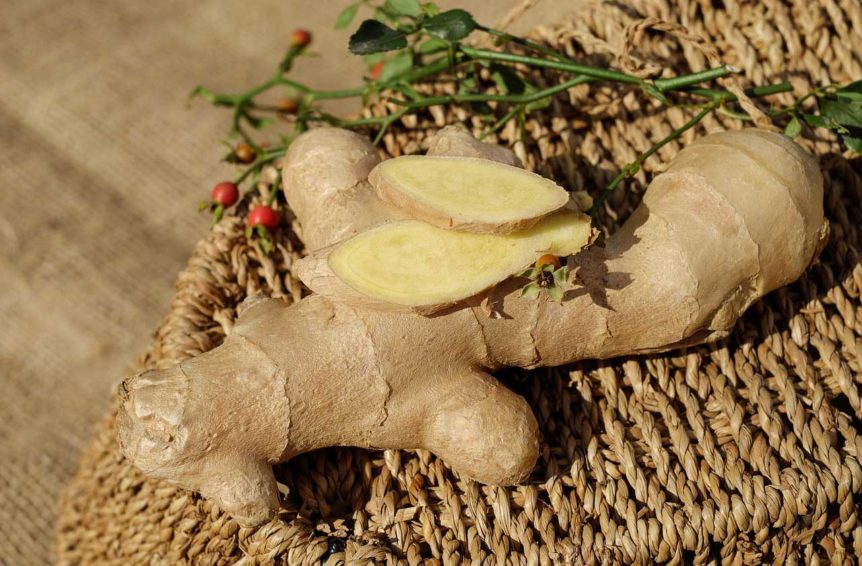Many people still remember arriving home after school and smelling the inviting aroma of Mom’s soft, warm, ginger cookies just out of the oven. Some enjoy the ritual of dipping them in milk and savoring their delectable flavor. After three, four, five or more cookies one struggles to push themselves away from the plate of yummy goodness. A key ingredient to these cookies was the ginger.
Believe it or not, there are more than 1,200 species of Ginger. The Ginger found in every day kitchens is safe for internal use but many of the species are not. Ginger is a tropical plant which grows approximately three feet tall. The part of the plant used as a spice is the root and is classified as a vegetable. From the gnarly, odd looking root, three different forms of the spice are obtained; ground ginger, fresh ginger, and ginger as an essential oil. Many recipes that call for ginger specify ground; however, raw, grated ginger root enhances many an entree, appetizer, or dessert. What could be better than a dollop of whipping cream on a healthy portion of gingerbread cake, sitting down to Asian Ginger Beef, decorating a gingerbread house, or drinking a refreshing, cold glass of ginger ale. The list of scrumptious goodies goes on and on. Ginger can be used to tenderize meat, making it easier to digest. The root and the oil make great preservatives, as well as wonderful flavoring agents.
Ginger is one of the world’s oldest spices, originating from India and China, as far back as the first century AD. Since then its use has spread throughout the world. Even the ancient Romans are known to have used and traded Ginger. At that time, it was expensive to obtain; costing, in comparison, as much as a live sheep. Today, the chief producers of Ginger are China and Australia. For fresh use, the plants are harvested between 5 to 7 months. If harvested after 7 months, its flavor is too strong and only good in dried form.
In order to draw the essential oil out of Ginger, the root is steam distilled. The oil is an enticing light yellow color and can be diluted with other spicy oils such as frankincense and bergamot. When applied to the skin it produces a warming sensation.
The medicinal benefits discovered by many are as follows:
- Promotes a healthy digestive system.
- Eases muscle soreness after strenuous athletic or work activities. A few drops of Ginger oil mixed in an ounce of carrier oil makes a wonderful massage oil.
- The diffused scent energizes and revitalizes.
- Ginger calms an upset, nauseous stomach. Ginger Ale has worked wonders for some to settle an upset or sick stomach.
- It has antiseptic qualities.
- Promotes enhanced blood circulation.
- Some have found the oil helpful in loosening phlegm common with respiratory ailments.
- Helps alleviate gas and flatulating.
- Lower blood pressure has been a benefit to many.
- Last but not least are its anti-inflammatory properties.
Next time you are feeling a little under the weather or extra stressed make a warm concoction of ginger tea and sit back and relax.

